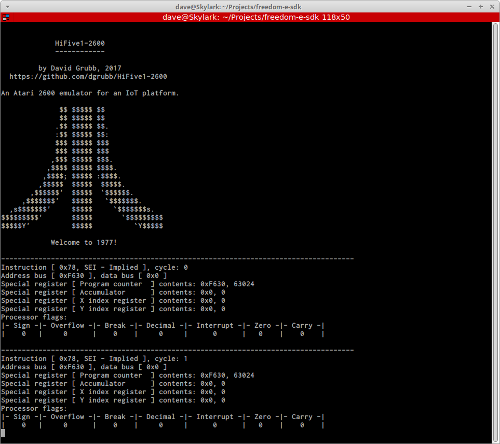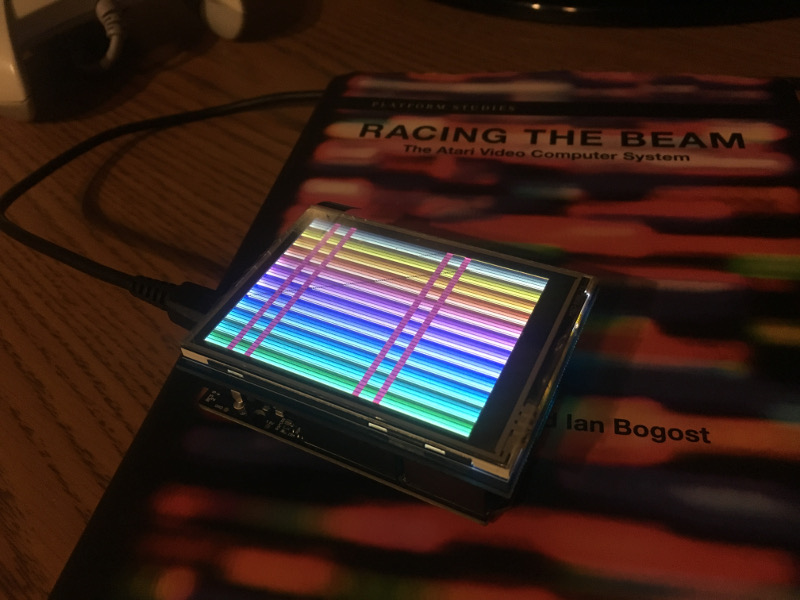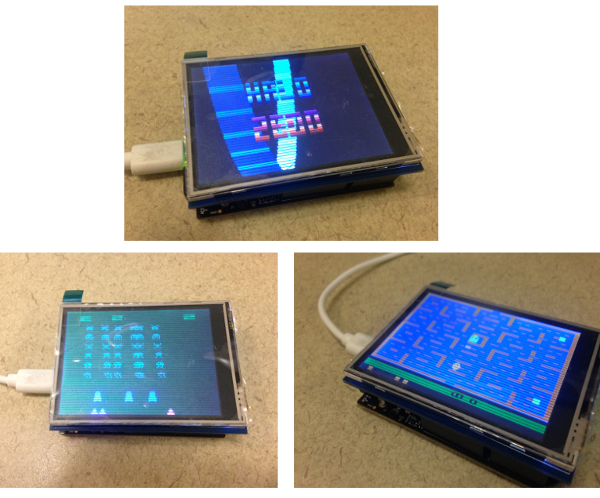This project is an embedded cycle-accurate simulation of a MOS 6502 (technically, 6507) processor. Also included is an abstraction of the Atari's RIOT (RAM I/O-Timer) chip and Jay Miner's Television Interface Adapter (TIA) IC. The end goal is to create an emulator capable of executing Atari 2600 games on a modern micro-controller level device.
Because I'm personally interested in learning about how the Atari 2600 worked, understanding the 6502 processor and wanted to build a project which would make extensive use of a RISC-V micro-controller. Writing an emulator is a great way to practice programming and doing so in a resource constrained environment presents interesting problems.
This project targets the SiFive HiFive1 development board paired with a 2.8" TFT touchscreen from Adafruit.
Checkout the freedom-e-sdk and clone this repository directly into the software directory. Proceed to compile and upload as with any other freedom-e-sdk program:
$ make software PROGRAM=HiFive1-2600 BOARD=freedom-e300-hifive1
$ make upload PROGRAM=HiFive1-2600 BOARD=freedom-e300-hifive1
Optionally, uncommment in the Makefile:
-
-DEXEC_TESTS run the unit test suites which will load test programs into the emulator and verify the correct functioning of the simulation.
-
-DMANUAL_STEP disables automatic clocking and executes a clock cycle with each press of the spacebar. Useful for step-by-step debugging.
-
-DCOLOUR_TEST Executes a simple test where the TIA colour map is displayed on screen.
At the moment ROMs are handled as inline uint8_t arrays. These can be generated from binary ROM images using xxd, e.g.,:
$ xxd -i some_file.bin
will generate a .c file with an array containing each byte value and a variable denoting the array length, e.g.,:
char some_file_bin[] = {
0xa9, 0x00, 0x85, 0x01, 0xa9, 0x02, 0x85, 0x00, 0x85, 0x02, 0x85, 0x02,
0x85, 0x02, 0xa9, 0x00, 0x85, 0x00, 0x85, 0x02, 0x85, 0x02, 0x85, 0x02,
0x85, 0x02, 0x85, 0x02, 0x85, 0x02, 0x85, 0x02, 0x85, 0x02, 0x85, 0x02,
etc ...
[...]
};
int some_file_bin_len = 4096;


